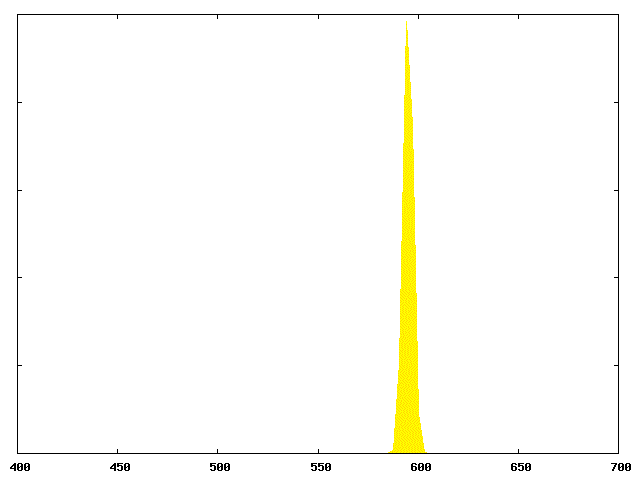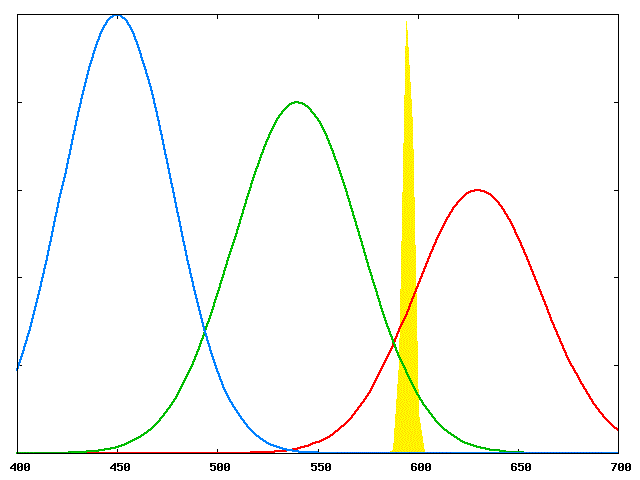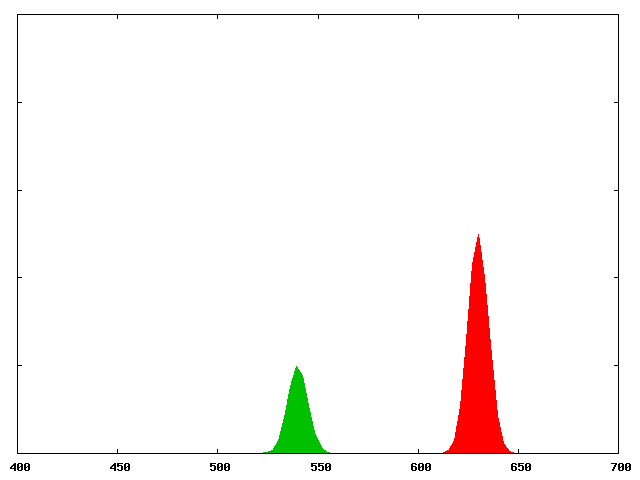Color vision is a tricky concept. Whereas our ears are sensitive to a multitude of different frequencies between 20 Hz and 20 kHz (or less if your ears, like mine, are more than half a century old), our eyes really only see three different color frequencies or wavelengths: red, green and blue.
Color photography and color video make use of this fact by only capturing these three "primary" colors. Now I should hasten to add that insofar as the physics of light is concerned, there is nothing "primary" about red, green or blue as opposed to yellow, turquoise or violet. What makes these colors "primary" is the physiology of the eye.
Moreover, not just any eye; I am talking human eye. Other animals are sensitive to different colors (more or fewer) and may even sense other properties of light, notably its polarization, to which the human eye is blind.
So what does this mean in practice? Take for instance the light from a sodium lamp. It has a very monochromatic spectrum; that annoying yellow light that is still used often for street lighting. Here is what its spectrum looks like, more or less:

So now, you capture this using a video camera, which is sensitive only in three colors (red, green and blue) with broad-spectrum sensors:

Finally, you reproduce it using a display that emits only red, green and blue light:

Now it so happens that your eye cannot tell the difference between the light represented by the first and the third picture. Your red and green cones in your retina are stimulated just the same by both. This is why we can get away with capturing color information so crudely. (The musical equivalent would be trying to reproduce Beethoven's Ninth using only three "primary sounds", say a 50 Hz bass sound, a 500 Hz "normal" note and a 5000 Hz shriek. I guarantee that the result will not be pleasant.)
And the physical information encoded in the original color spectrum (namely, the specific narrowband emission of low-pressure sodium gas, easily identifiable even by a crude spectroscopic analysis) is completely lost. There is no yellow light encoded in the image data, nor is there any yellow light emitted by your screen (indeed, your screen if physically incapable of emitting yellow light.) Yet our eyes happily register this specific combination of red and green light as "yellow". We just cannot tell the difference.
Except... there is one way to tell the difference. Suppose you have a material that is highly reflective in yellow light, but does not reflect red light or green light. Under a sodium lamp, the material would appear bright yellow. But under the "yellow" light coming from a computer screen, the same material will appear dark.
The light from the Sun has a more or less continuous spectrum throughout the visible range; all colors are present. This is also true for incandescent light bulbs. Other light sources, however, do not necessarily have such continuous spectra. Neon lights, fluorescent lights, LED lights often have rather ugly-looking spectra that happen to contain just the right balance of red, green and blue for it to register in our eyes as "white". So the next time you hear an artist complain that a particular paint or fabric must be examined under "natural" light, don't laugh: they make a very good point. Indeed, two paints or two pieces of fabric that appear to have the exact same color, say, under a fluorescent light may appear strikingly different in sunlight... or vice versa.
Tricky business, color vision.


